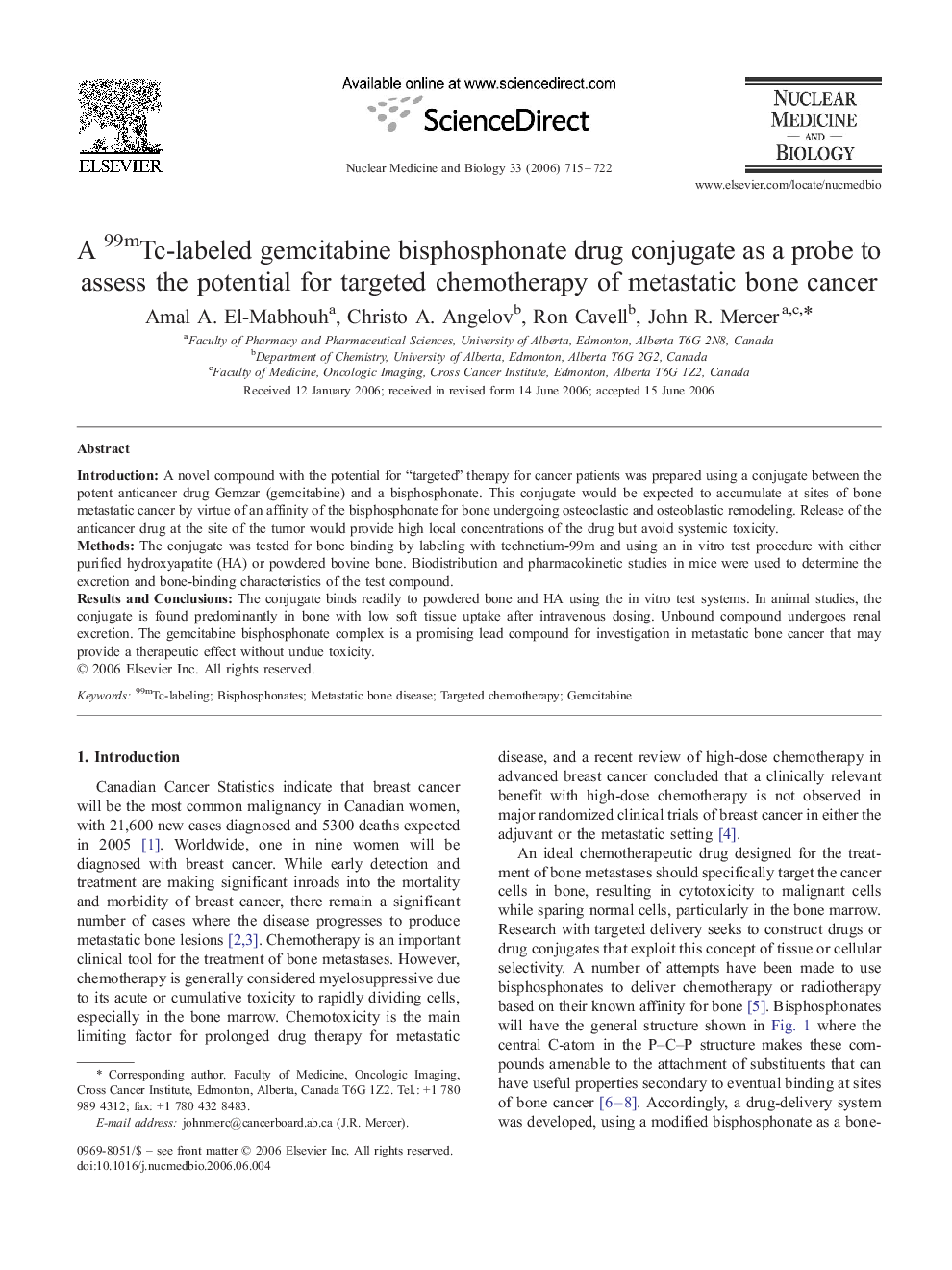| Article ID | Journal | Published Year | Pages | File Type |
|---|---|---|---|---|
| 2154793 | Nuclear Medicine and Biology | 2006 | 8 Pages |
IntroductionA novel compound with the potential for “targeted” therapy for cancer patients was prepared using a conjugate between the potent anticancer drug Gemzar (gemcitabine) and a bisphosphonate. This conjugate would be expected to accumulate at sites of bone metastatic cancer by virtue of an affinity of the bisphosphonate for bone undergoing osteoclastic and osteoblastic remodeling. Release of the anticancer drug at the site of the tumor would provide high local concentrations of the drug but avoid systemic toxicity.MethodsThe conjugate was tested for bone binding by labeling with technetium-99m and using an in vitro test procedure with either purified hydroxyapatite (HA) or powdered bovine bone. Biodistribution and pharmacokinetic studies in mice were used to determine the excretion and bone-binding characteristics of the test compound.Results and ConclusionsThe conjugate binds readily to powdered bone and HA using the in vitro test systems. In animal studies, the conjugate is found predominantly in bone with low soft tissue uptake after intravenous dosing. Unbound compound undergoes renal excretion. The gemcitabine bisphosphonate complex is a promising lead compound for investigation in metastatic bone cancer that may provide a therapeutic effect without undue toxicity.
